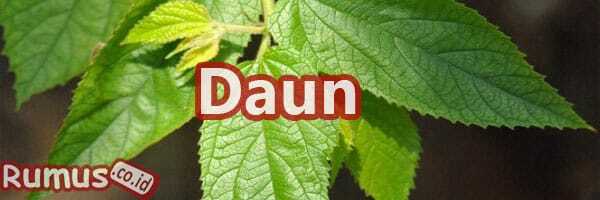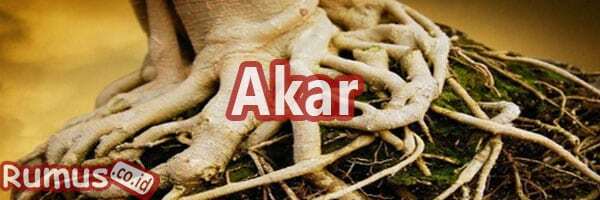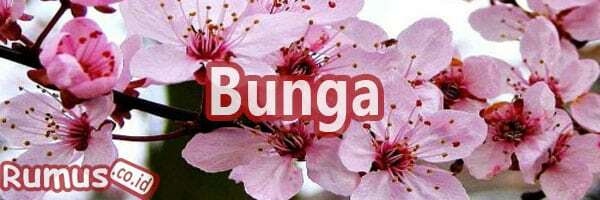10 Differences between Monocots and Dicots
Difference Between Dicot And Monocot – What are Monocot Plants and Dicot Plants? Therefore, on this occasion we will discuss it together, let's take a good look at the articles that are available below.

In plants that produce fruit there are 2 types of groups, namely monocots and monocots Two-piece Plant (Dicot).
But the difference between these two groups of plants is not only seen from the seeds, but there are many differences between the two, which are as follows:
No |
Difference |
Monocot |
Dicot |
1 |
Number of Seeds |
One piece |
in two pieces |
2 |
Bone leaves |
Parallel or Curved |
Fingering or Fining |
3 |
Leaf Shape |
Elongated like a ribbon |
Tends to be Symmetrical & Curved |
4 |
Root Type |
fiber |
ride |
5 |
Root Hood |
There is |
Nothing |
6 |
Number of Petals |
Multiple of 3 |
Multiples of 4 to 5 or more |
7 |
stem |
Not cambium & not woody |
Cambium & Woody |
8 |
Root & Stem Growth |
Stagnant (Unable to enlarge) |
Can grow |
9 |
Location of Carrier Files |
Scattered & disorganized |
Scattered & Organized |
10 |
Pollen Structure |
Have one pore |
Has three pores |
11 |
Examples of Plants |
Rice, Palm, Coconut & Corn |
Mango, Banyan, Guava, Rambutan & Teak |
In the table above we can conclude the difference between Monocot Plants and Dicot Plants. But for clarity, we will discuss them one by one below:
Table of contents :
A. Definition of Monocot and Dicot
1. Monocot Plants is a flowering plant (Angiosperms) which has one seed. In plants of this type have alternating leaves, parallel leaf bones, and also have one Institution Leaves or better known as cotyledons.
2. Dicotyledonous Plants is a flowering plant (Angiospermae) that has seeds in two pieces. This type of plant has a pair of Institution Leaves or better known as cotyledons.
The leaves of this institution have been formed since the first time they formed a seed in a plant. Therefore, most of these dicotyledonous plants, the seeds are easily split into two parts.
B. Number of pieces of monocot and dicot seeds

1. Monocot Seed Chips
In monocotyledonous plants, there is one seed in the fruit, because during the germination process the seeds in the fruit do not undergo division.
2. Dicot Seed Chips
In dicotyledonous plants, the fruit has two pieces of seeds, because during the germination process the pieces of seeds in the fruit undergo division.
C. Monocot and Dicot leaves

1. Monocot leaves
The leaves of monocot plants have an elongated shape like a ribbon with a leaf bone that is formed parallel or curved.
2. Dicotyledonous Plant Leaves
The leaves of dicotyledonous plants have a symmetrical shape and wide with pinnately formed leaf bones.
D. Roots of Monocot And Dicot Plants

1. Monocot Roots
The roots of monocot plants have a fibrous root system that tends to be thin and small. The roots of this monocot plant have a root cap (calyptra).
2. Dicotyledonous Plant Root
The roots of dicotyledonous plants have a strong taproot form system, many branches, tend to be thick and large so that they are able to penetrate into the soil. The roots of this dicot plant do not have a root cap (calyptra).
E. Monocot And Dicot Flower Plants

1. Monocot Flower
In monocotyledonous plant flowers have 3 multiples on the petals and the pollen structure on the flowers only has 1 pore.
2. Dicotyledonous Plant Flowers
In dicotyledonous plants flowers have 4 or 5 multiples on the petals and the pollen structure on the flowers has 3 pores.
F. Monocot And Dicot Plant Stems

1. Monocot Plant Stem
The stems of monocots do not have cambium, are not woody, do not branch but continue to grow straight up.
2. Dicotyledonous Plant Stem
In the stems of dicotyledonous plants, the cambium is located between the xylem & phloem, is woody, and has many branches.
G. Monocot And Dicot Transport Files

1. Monocot Plant Transport File
In the carrier bundle of this monocot type of plant stem, it is irregular and spreads either in the wood vessels or the sieve vessels on the stem of the plant.
2. Dicotyledonous Plant Transport File
In this dicotyledonous type of plant stem carriers are regular, because the xylem is located inside the cambium and the phloem is located outside the cambium on the plant stem.
H. Types of Monocot and Dicot Plants
No |
Monocot Plants |
Dicotyledonous Plants |
1 |
Rice (Oryza Sativa) |
Albisia (Albizia Sp) |
2 |
Corn (Zea Mays L) |
tamarind (Tamarindus Indica) |
3 |
Salak (Sallaca Edulis) |
Spinach (Amarantus Hybridus) |
4 |
Ginger (Zingiber Officinale) |
bougainvillea (Bougainvillea Glabra) |
5 |
Cane (Sacarum Officinale) |
Bean (Phaselous Granatum) |
6 |
Aren (Arenga Pinnata) |
Pomelo (Citrus Maxima) |
7 |
Turmeric (Curcuma Domestica) |
Pomegranate (Punica Granatum) |
8 |
Garlic (Allium Sativum) |
Pea (Punica Granatum) |
9 |
Shallot (Allium Cepa) |
Red chili pepper (Capsicum Annum) |
10 |
Sago (Metrotylon Sagoo) |
Guava (Psidium Guajava) |
11 |
Banana (Moses Paradisiaca) |
Tomato (Solanum Lycopersicum) |
12 |
Water hyacinth (Eichornia Crassipes) |
Rubber (Gossypium Sp) |
13 |
Galangal (Alpinia Galangal) |
Australian Acacia (Acasia Auriformis) |
14 |
Bamboo (Bambusa Sp) |
banyan (Ficus Benjamin) |
15 |
Melon (Cucumis Melon) |
Starfruit (Averrhoa Blimbi) |
16 |
Dragon (Hylocerus Undatus) |
Four o'clock flower (Mirabilis Jalapa) |
17 |
Sawo (Menikara Kavki) |
Cermai (Phyllanthus Acidus) |
18 |
Vanilla (Vannilla Planifolia) |
Tobacco (Nicotina Tabacum) |
19 |
Iris(Iridaceae) |
Flamboyant (Delonix Regia) |
20 |
Reeds (Imperaa cylindrical) |
Lime (citrus) |
Thus an explanation of the 10 differences between monocots and dicots and their definitions Differences that include Seeds, Leaves, Roots, Flowers, Stems, Carrier Bunches and Miscellaneous Plant.
Hopefully it can be useful and become a useful knowledge for all of us.
